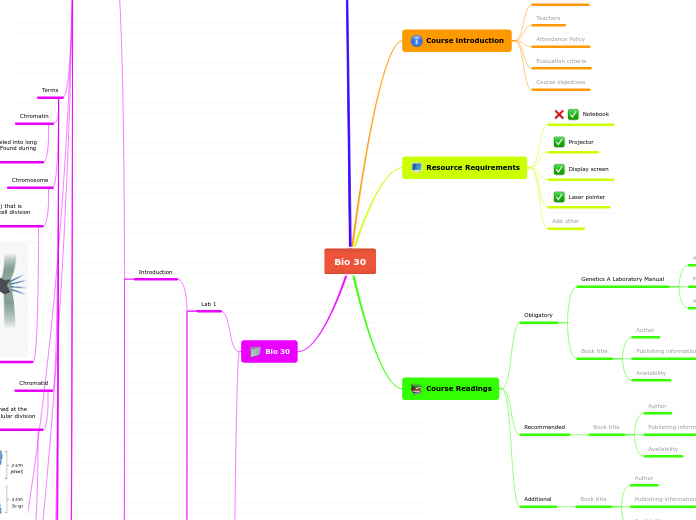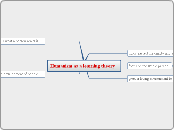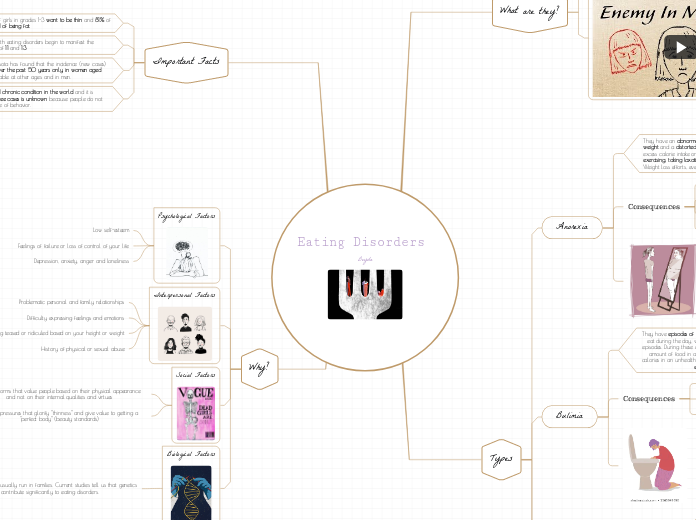Bio 30
Type in the name of your subject.
Add detailed notes about each lecture, so that when the time comes to prepare for exams, you will have an easier and quicker overview.
Lecture 2
Lab 1
Homework
Add a short description of your homework and any details you need in order to understand and complete the task.
Check your knowledge
Add a list of questions to help you recap your lecture.
Discussion
Write down if there are things you would like to discuss or clarify with your teacher or colleagues in relation to this topic.
Introduction
Add a short description of the lecture.
Beginnings of Genetics
Beginnings of Classical Genetics
Elucidation of the DNA Structure
- 1953
- James D. Watson (Alive) and Francis H. Crick
- DNA double Helix
Oswald Avery, Collin Mcleod and Maclyn Mccarty
- DNA as hereditary material
Thomas Hunt Morgan and Calvin Bridges
- Association between specific gene and specific chromosome
Walter Sutton (USA) and Theodor Boveri (Germany)
- Chromosome theory of inheritance
William Bateson, Saunders and Lucien Cuenot
- Observed Mendel’s principles on animal
Carl Correns (Germany), Erick Von Tschermack (Austria) and Hugo De Vries (Netherland)
- Duplicated Mendel’s experiment on plants
- 1865 Gregor Mendel (Father of Genetics)
- Concept of gene
- Presence of discrete hereditary unit
- Explains similarities and differences among parents and offspring’s
- Responsible for two important principles of genetics
i. Principle of Segregation
ii. Principle of independent assortment
Kolreuter, Gadner, Naudin, Charles Darwin and Dzierson
- Uniformity in f1
- Variations in f2
August Weismann (Germplasm Theory)
- Plans for the entire body are contributed only by the sex cells
Before Gregor Mendel
Golden age of Greek Culture attention was given to
- Reproduction
- Hereditary
Jean Baptiste De Lamarck
- Theory of inheritance of acquired characteristic
- Acquired body modifications by use or disuse could be transmitted to the offspring’s
Aristotle (Theory of Pangenesis)
- All structures and organs of the body contribute copies of themselves to sex cells
- Heredity was thought as blending process
- Offspring are intermediate between the parents (not true if offspring is similar to one of the parents
Greek Word “Gen” to become or grow into something, Coined by William Bateson in 1905
Genetics
Application of genetics
4. Legal Applications
- Blood Type analysis
- DNA finger printing
Paternity testing
Disputed Parentage
Identify criminals
3. Genetics Counseling
Euphenics
- Replaced Eugenics
- Medical and/or genetic prevention
- Designed to reduce the impact of defective genotyped on individuals
- Inheritance of undesirable traits
- Pedigree analysis of prospective patients
Eugenics
- Coined by Francis Galton in1883 in England
- Application of genetic knowledge for the improvement of human race
2. Medicine
- Identification of diseases and abnormalities (w/ genetic basis)
- Metabolic Disorders (Phenylketonuria, Galactosemia)
- Newborn Screening
1. Microbial, plant and animal improvement
- Genetic Engineering or Recombinant DNA Technology
- Genetically modified organism (GMO)
Ex. Bt Corn, Cotton, Soybean, Eggplant
- Products of Recombinant DNA Technology
Ex. Insulin, Dietary Control
- Norman Borlaug – Green revolution
pic
Branches of Genetics
Quantitative Genetics
- role of genetics and environmental factors
- inheritance and expression of quantitative traits controlled by the genes and highly affected by the environment
- Math
- Statistics
- Fate of genes in the population
- Factors affecting gene frequencies
- Ecology
- Math
- Statistics
Behavioral Genetics
- Traits that are inherited
- Product of genes
Ex. Albanism=lack of Tyrosinase
- Psychology
- Biochemistry
Biochemical Genetics
- Role of enzymes/proteins
- Products of genes
- Biochemistry
- Physiology
Evolutionary Genetics
- Genetic change within and between species
- Ecology
- Math
- Statistics
- Biochemistry
Developmental Genetics
- Gene regulation during development
- Switching on and off of genes
- Physiology
- Morpho-anatomy
- Biochemistry
Cytogenetics
- Behavior of chromosomes (carriers of the genes)
- Physics(optics)
- Staining Technology
- Structure and functions of genes at the molecular level
- Central Dogma of Molecular Biology
- Physical Chemistry
- Biophysics
- Biochemistry
Three interrelated fields in genetics
Population Genetics
- Studies the genetic composition (frequency) of groups of individuals of the same species (population)
- How the composition changes overtime
- Study of evolution (genetic change)
Molecular Genetics
- Chemical nature of the gene
- How the genetic information is replicated, encoded, and expressed
Transmission Genetics (Classical Genetics) (Gregor Mendell)
- Encompasses the basic principles of genetics
- How traits are passed
- Discuss relationship between chromosomes and heredity
- How the individual inherits its genetic makeup and pass it to the next generation
Genes are the principal determinants of life processes
Adaptability, Behavior
Reproduction
Organisms Appearance
Cell Structure, Function
Organization of cells into tissues/organs
Branch of Biology that studies heredity and variation
Variation
differences between parents and offspring, differences among the offspring, difference among individuals in the population
Heredity
transmission of traits from parents to offspring, similarity
Nucleus
Nuclear membrane
Chromatin
granular darkly staining material
Nucleoli
one/Several small round bodies called chromatin
Terms
Diploid
Man=2n=46
two sets of chromosomes
Kinetochores
Site of attachement of spindle fibers
Centromere
The spot, usually in the middle, . This spot holds the two sister chromatids together
Centriole
Found in animal cells only. They provide attachment for spindle fibers
Spindle fibers
Protein strands that attach to the centromere and pull the chromatids to opposite ends of the cell
Nucleolus
Used in the synthesis of ribosomes (protein synthesis)
Homologous
Chromosomes
Chromosomes that contain similar genes or DNA sequences but are not identical. One of the pair comes from each parent.
Chromatid
Replicated, identical chromosomes that are attached at the centromere. Chromatid pairs are found during cellular division (metaphase of mitosis and meiosis)
Chromosome
Thick shortened strands of genetic material (DNA) that is inaccessible or packaged. Noticeable just before cell division (condensed)
Chromatin
Strands of genetic material (DNA) that are unraveled into long thin strands (accessible DNA) during interphase. Found during the resting phases of the cell’s life cycle
Cell Cycle
M-phase
Comparing of mitosis and meiosis
Meiosis
Meiosis is important because
It continually reshuffles the genetic material (recombination) between generations producing natural variation.
It conserves the chromosome number in sexually reproducing species. Without it the number of chromosomes would be doubled every generation.
Parent Cell(2n)≠Daughter Cell(n)
Undergone by Germ cells (Gametic Cells)
Meiosis II (MII)
Telophase II
Nuclear membrane reforms around chromosomes, cytokinesis occurs producing two haploid cells from each cell.
Anaphase II
Spindle fibers pull chromatids apart (breaks the centromere) and chromatids/chromosomes move to opposite poles of the cell
Metaphase II
Chromosomes line up at equatorial plate, spindle fibers attach to centromeres
Prophase II
Spindle fibers form, nuclear membrane disappears
Equational Division
Meiosis I (MI)
Telophase I
Cytokinesis occurs forming two cells with half the number of chromosomes as the parent cell, nuclear membrane forms around the chromosomes
Anaphase I
The chromatids do not separate at the centromere
Homologous chromosome pairs move to opposite poles of the cell in a process called segregation.
Metaphase I
Homologous chromosomes line up randomly on the equatorial plate,spindle fibers attach to the centromere
Prophase I
Diakinesis (dia="Across")
Terminalization of the chiasmate between homologues that underwent crossing over occurs at this stage resulting in complete separation of the homologues
Bivalents are maximally condensed and are distributed throughout the nucleus
Diplonema (Diplo="Two")
The synaptonemal complex no longer functional, the longitudinal seperation of homologues in a bivalent starts from the centromere and proceeds toward both ends except at the chiasma
Pachynema (pachus="Thick")
Nucleolus is still evident, the chromosomes attached to it are know as nucleolus organizers
Crossing over
Cytologically observed throught the formation of chiasma (pl. Chiasmata) at the point of exchange
Repair may entail exchange of segments between sister and non sister chromatids in a bivalent
Chromosomes are thicker due to further coiling
Zygonema (zygo="adjoining")
2 Chromosome = Bivalent = 4 Chromatids
Synapsis or pairing of homologous chromosomes
Leptonema (Leptos = "Thin" nema="Thread)
Appear as long thing threads with many bead like structures
Reductional Division
Mitosis
Karyeokinesis
Parent Cell (2n)=Daughter Cell(2n)
These cells are used for growth or replacement of dead or damaged cells.
Nuclear division characterized by chromosome replication and formation of two identical
daughter nuclei (2n) using one division.
Asexual Reproduction (1 Parent Cell)
Undergone by all somatic(body) and germ
Telophase
Nuclear membrane reforms, chromosomes disappear, cytokinesis occurs
Anaphase
Chromatids segregate (separate) and move to opposite spindle poles
Metaphase
Spindle fibers formed and attach to centromeres, chromosomes line up across
equatorial plate
Prophase
Nuclear membrane breaks down, spindle fibers begin to form, chromosomes condense
Cell Division
divided into two parts nuclear division (mitosis or meiosis) and
cytokinesis (10%)
Interphase
occupies most of the cells life cycle (90%) and subdivided into three sections G-1 phase, S phase, and G-2 phase
Gap 2
Cell growth, protein synthesis, 4 hours
S phase (synthesis)
DNA replication, up to 7 hours
Gap 1
Cell growth, protein synthesis, normal cell
functions, about 11 hours
Project Work
Add here all the details about your projects.
Group 1
Team Members
Add the team members.
Student Name
Short Project Description
Add a short project description.
Project Name
Add the project name.
Course Schedule
Schedule your course ahead. Knowing all the information will make everything easier.
Weekly Lecture
A
Friday, 7-8
Wednesday, 7-8
Weekly Lab
Add the class information for each week.
A -3l
Add class name.
Tuesday, 10-1
Add additional information about this class.
Course Readings
Add key information about the books you've read. If you feel it's necessary, you can add a small summary of your readings in the Notes section.
Additional
Recommended
Obligatory
Book title
Genetics A Laboratory Manual
Add summary of the content of a book
Availability
Add details about where you can get it from. For e.g.: library, bookstore, audiobook, etc.
Publishing information
Add the publishing information.
Author
Name the author.
Resource Requirements
Review your resource requirements and tick off the devices you will need as well as their availability. Add others, if necessary.
Add other
Add other resources:
Laser pointer
Display screen
Projector
Notebook
Select as needed:
Course introduction
Type in all the info you would like to know about this subject. If there is something you don't know yet, no problem! You can fill in the blanks along the way.
Course objectives
Did your teacher present the objectives of this course? Write them down and add anything else that might help you reach these objectives.
Evaluation criteria
Add details about your teachers' evaluation criteria. This way you will know the aspects you need to focus on.
Attendance Policy
Write down the attendance policy, to avoid confusion throughout the year.
Teachers
Type in the name of your teachers and teacher assistants, plus any details you should know about them.
Course Summary
Add details about your course.









